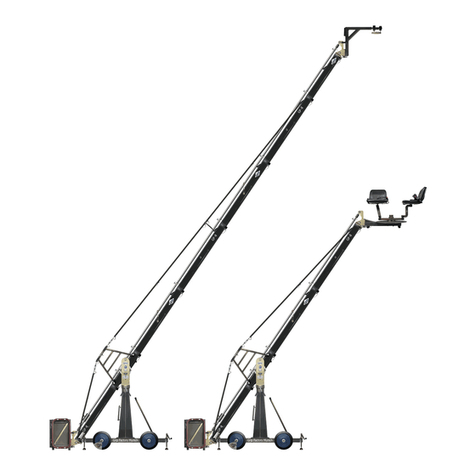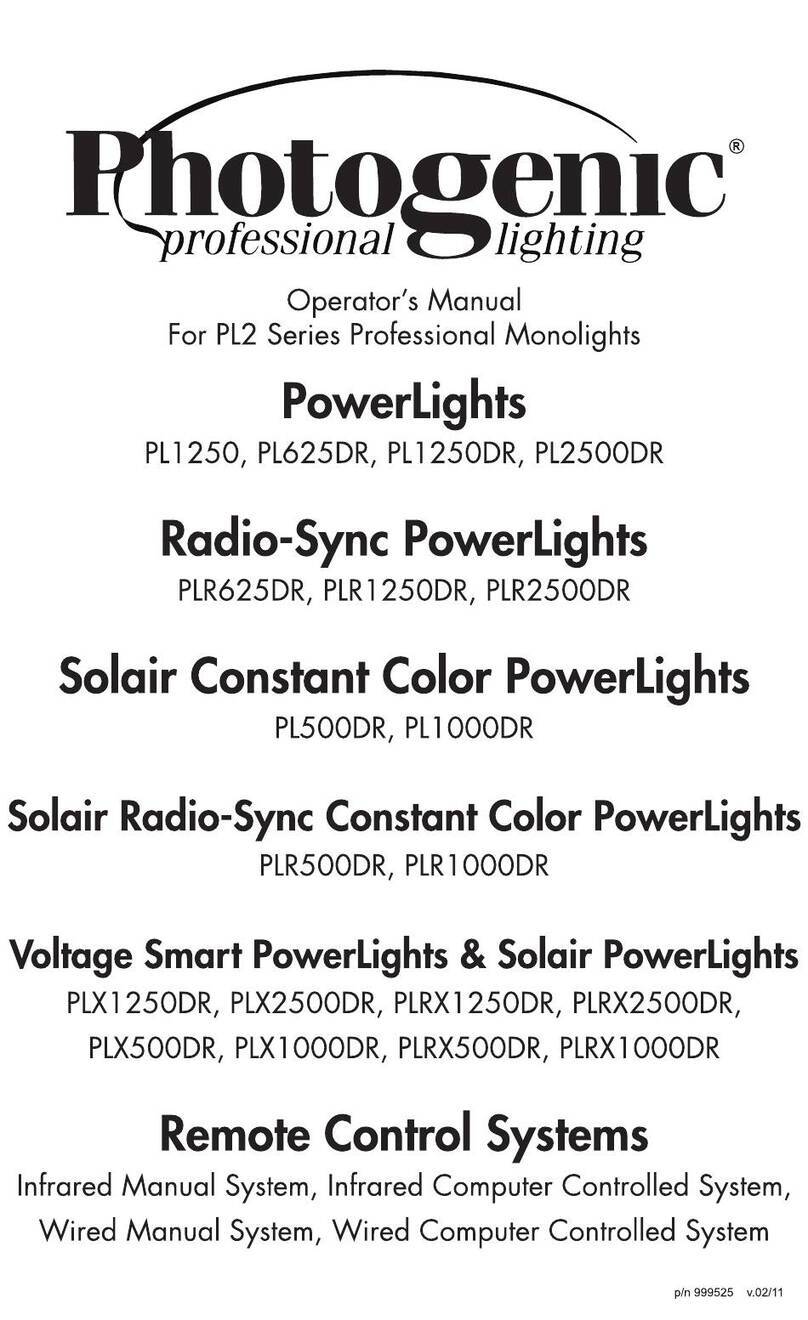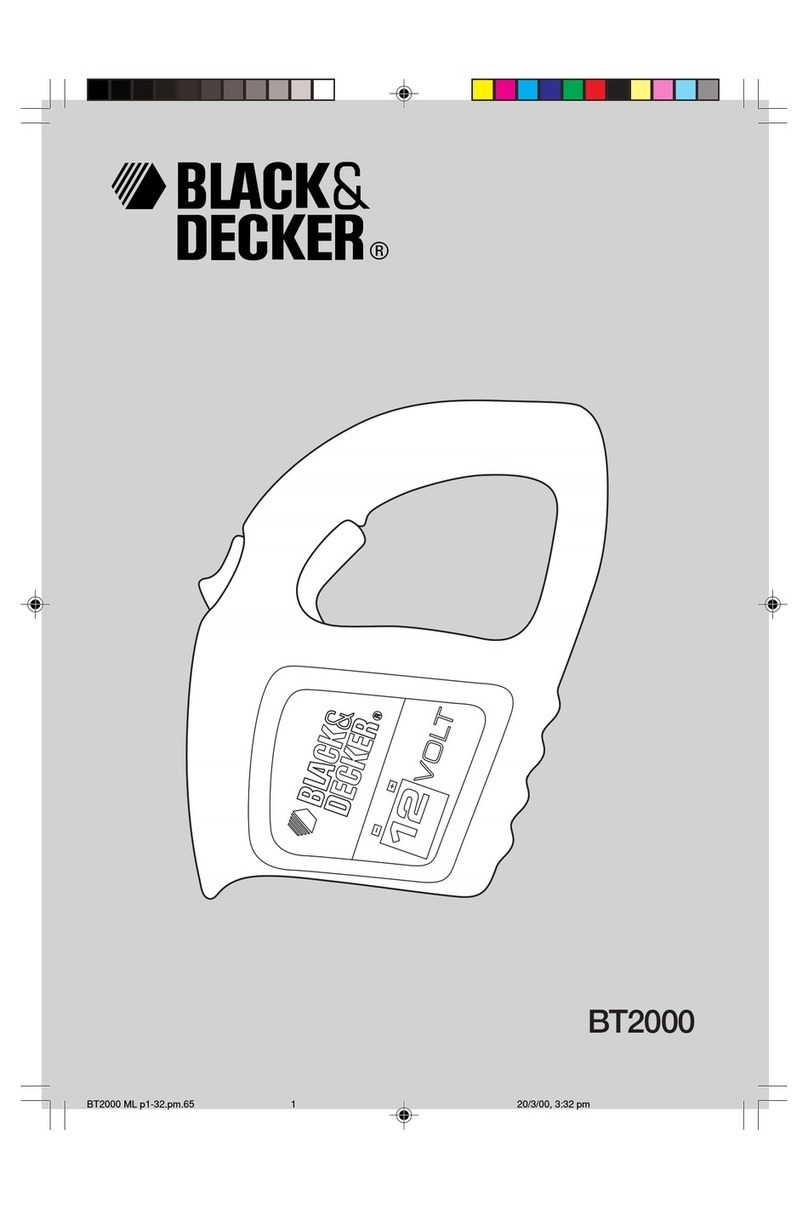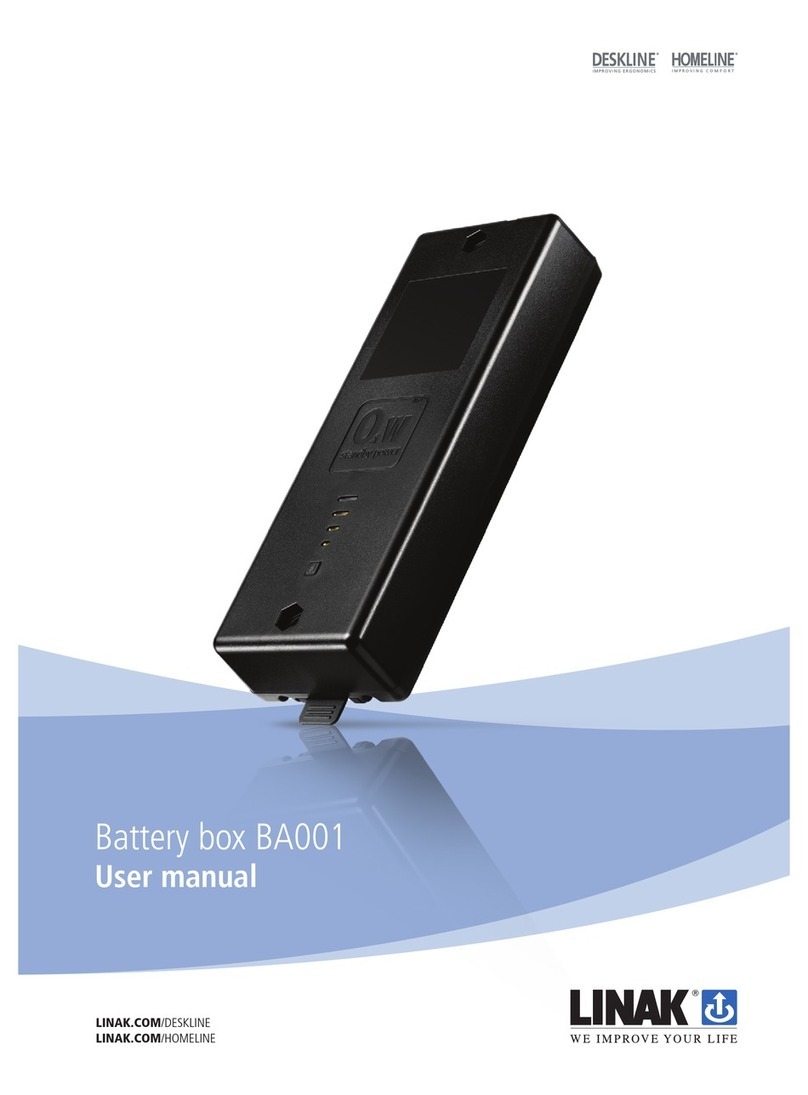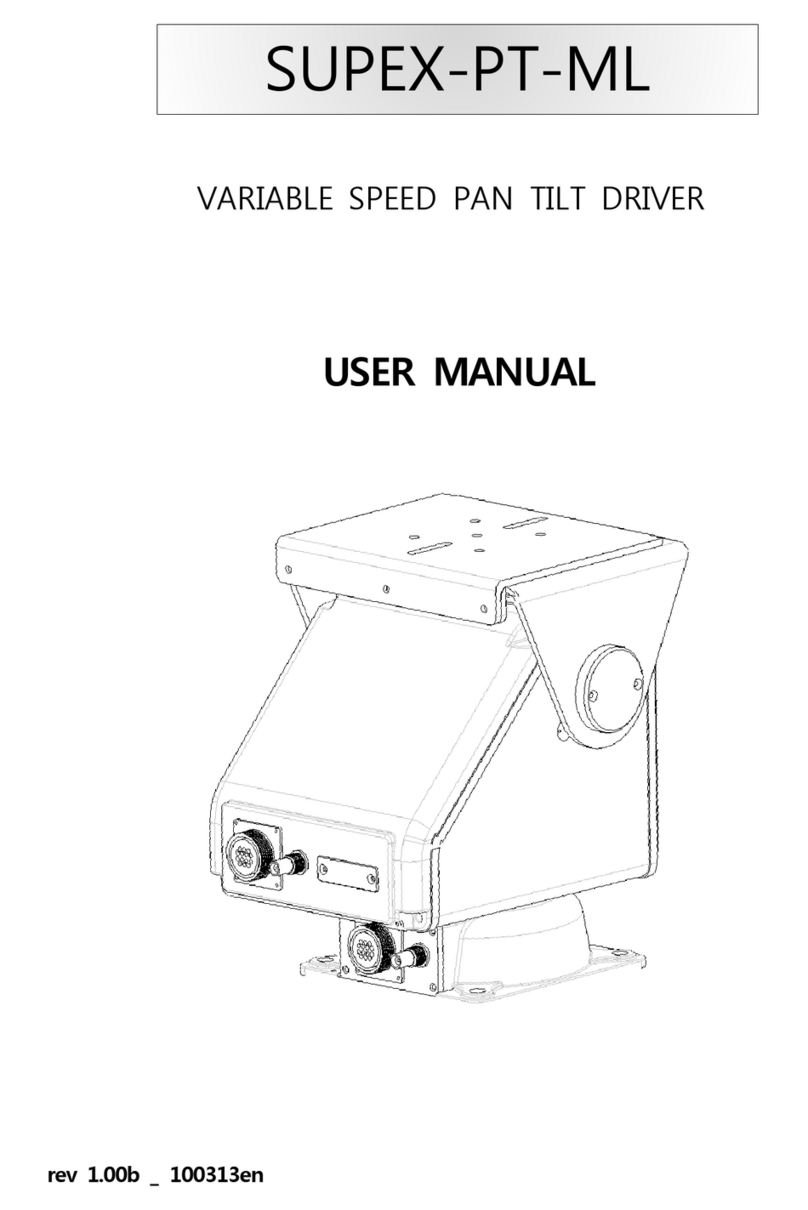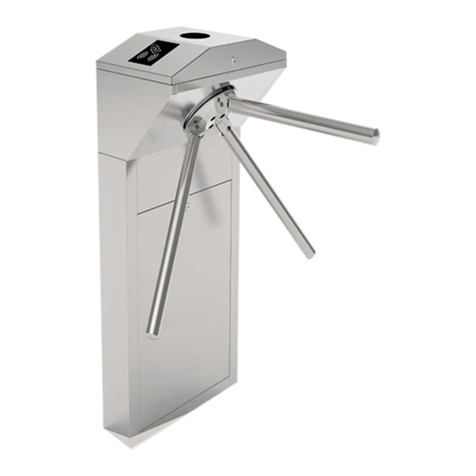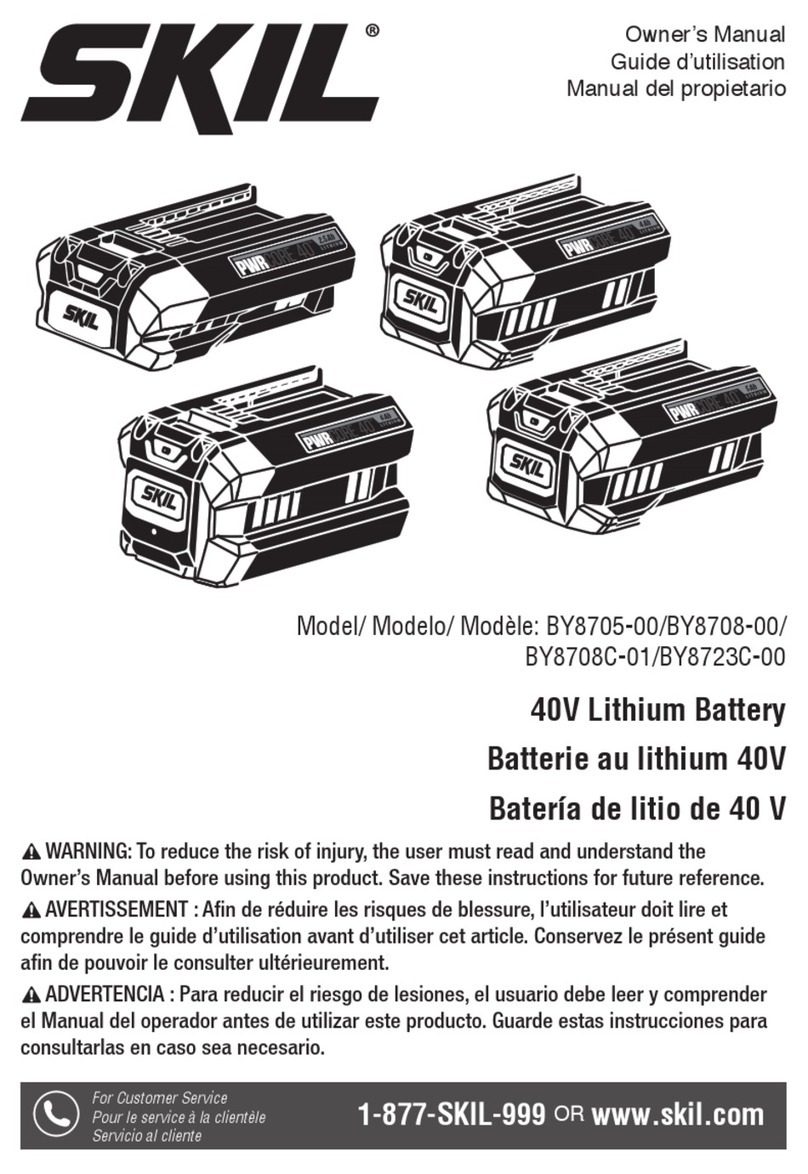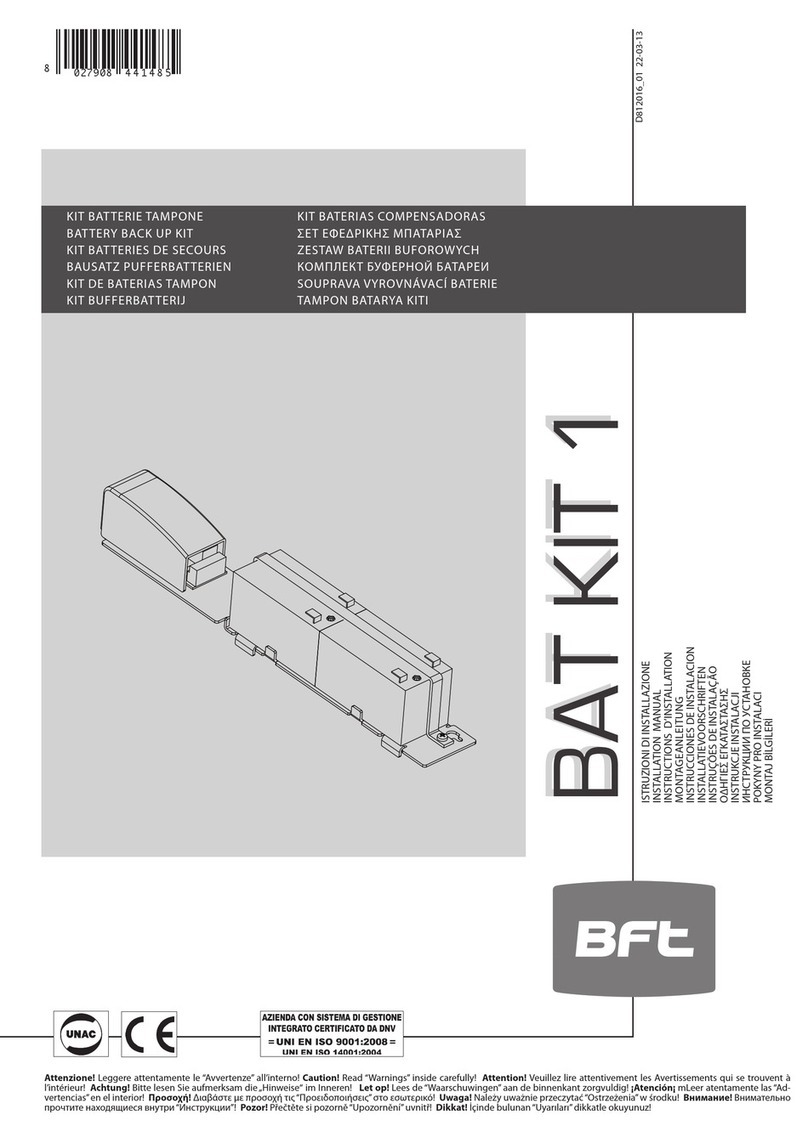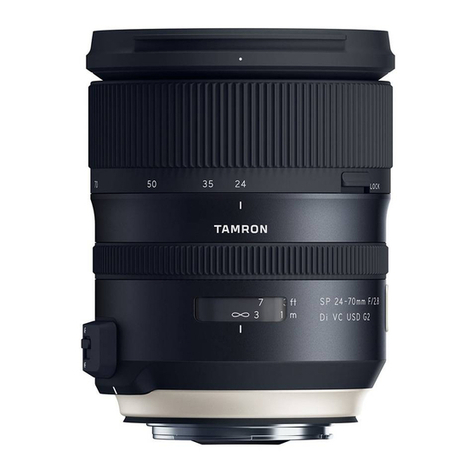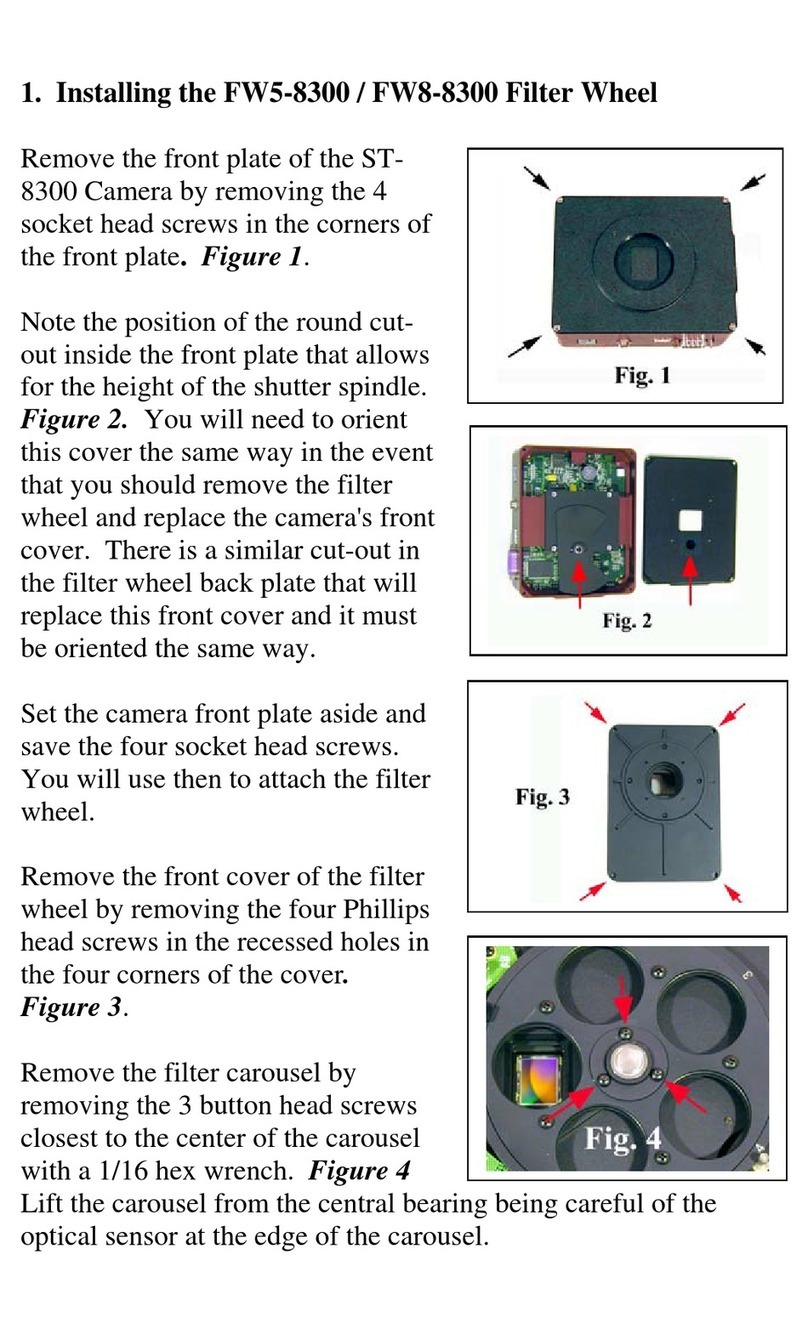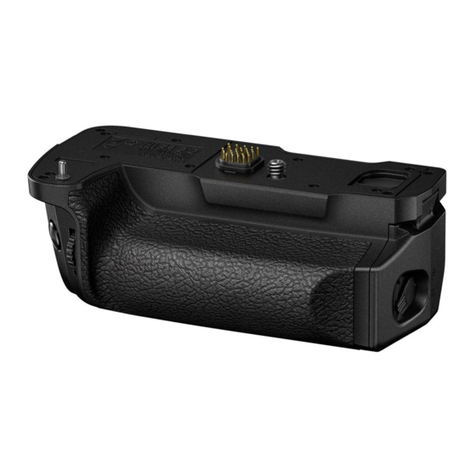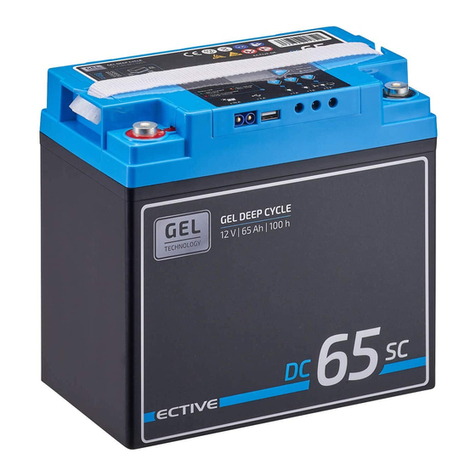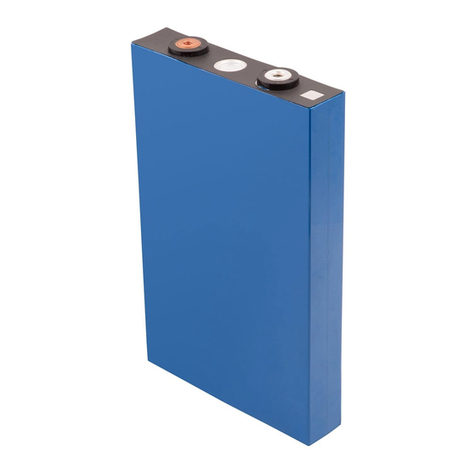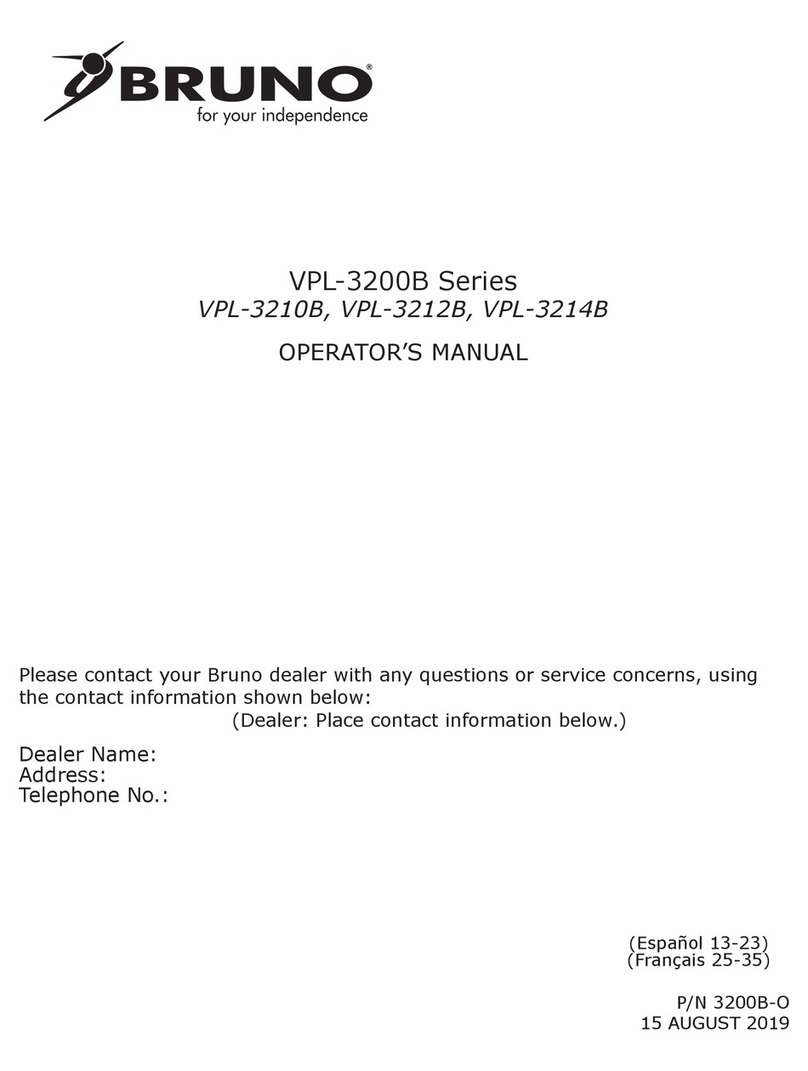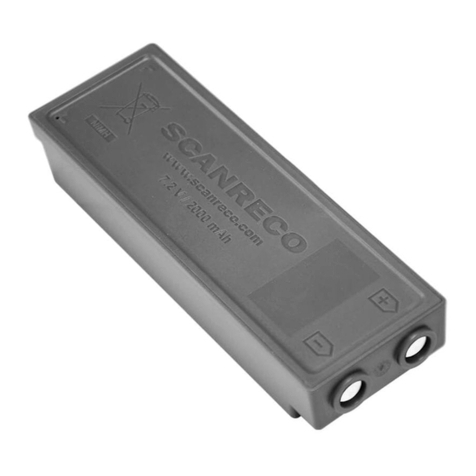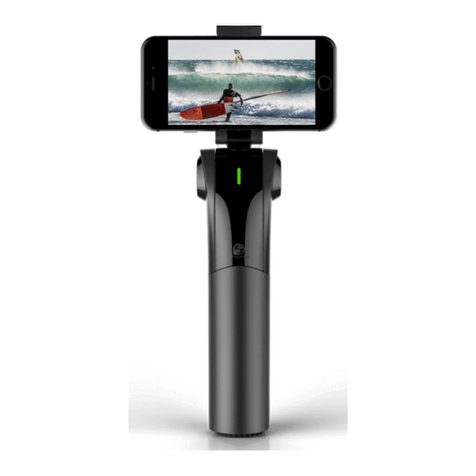gfm GF-Primo Dolly Operator's manual

1
Contents
1SAFETY GUIDELINES TO OPERATE THE DOLLY 3
2TECHNICAL SPECS FOR GF-PRIMO - / GF-SECONDO DOLLY 6
3THE GF-PRIMO DOLLY 8
3.1 Changing the batteries 8
3.2 Connecting the Platforms: 8
3.2.1 The Multifunctional Platform Set: 8
3.2.2 Mounting the Hi/Low Platform System: 10
3.2.3 Mounting the Hi/Lo Platform for use on track: 11
3.3 Wheel arm adjustment: 13
3.4 The Steering Handle 14
3.4.1 Connectiong the Steering Handle 14
3.4.2 Adjusting the angle of the Steering Handle: 14
3.5 Holders for the HCU 15
3.5.1 HCU Holder on the Steering Handle 15
3.5.2 HCU Holder on the Column: 15
3.6 Selecting Steering modes: 16
3.6.1 GF-Primo Dolly Steering modes: 16
3.6.2 GF-Secondo Dolly Steering modes: 18
3.7 Combi-Wheels –GF-Primo & GF-Secondo: 20
3.7.1 Combi-wheel Brake 20
3.7.2 Disconnecting the wheels from the steering: 20
3.7.3 Disconnecting the GF-Secondo Combi-wheel from the steering and
removing the Combi-wheel unit 21
3.8 Going on Track: 22
3.9 The Multifunctional Turnstile Mount: 22
3.10 Removing the Column with the Carry Bars: 24
4HAND CONTROL UNIT COMPONENTS 25
5ELECTRONIC UNIT COMPONENTS 27
6BEFORE OPERATING THE HCU AND THE DOLLY 27
7ACTIVATING THE HCU AND THE DOLLY 28
7.1 Activating wirelss mode 28
7.2 Activating in cable mode 29
8SYNCHRONISING THE WIRELESS CHANNELS 30
8.1 Synchronising the channels in cable mode 30
8.2 Synchronising the channels in wireless mode 32
9PAIRING THE HCU AND ELECTRONIC UNIT 34
9.1 Pairing via cable: 34
9.2 Pairing in wirelss mode 35

2
10 CALIBRATING THE COLUMN 37
10.1 Calibration procedure 38
10.1.1 Calibrating the column in cable mode 38
10.1.2 Calibrating the column in wireless mode 40
11 OPERATING THE HAND CONTROL UNIT (HCU) 42
11.1 HCU Settings 42
11.1.1 Explanation of the menu points 43
11.1.1.1 Sub-menu point USER 43
11.1.1.2 Sub-menu point DISPLAY 44
11.1.1.3 Sub-menu INFO 46
11.1.1.4 Sub-menu point JIB ON / JIB OFF 48
11.2 General HCU functions 49
11.2.1 Setting Ramps RMP and Speed SPD 49
11.3 Special HCU Modes 50
11.3.1 The various modes 50
11.3.1.1 Standard Modes “NORMAL”, “ENTER” und “MARKER”: 50
11.3.1.2 Extended Modes “PLAY”, “RECORD” and “DELETE”: 51
11.3.2 To change Modes 52
11.4 HCU Modes and the respective Display 53
11.4.1 NORMAL Mode 53
11.4.1.1 Setting individually adjustable LIMITs 56
11.4.1.2 ENTER Mode 57
11.4.1.2.1 Setting individually adjustable MARKERS 58
11.4.1.3 MARKER Mode 63
11.4.1.4 Mode PLAY, RECORD and DELETE 65
11.4.1.4.1 RECORD Mode –Recording a movement sequence 66
11.4.1.4.2 PLAY Mode - Abspielen einer gespeicherten Fahrtsequenz 68
11.4.1.4.3 DELETE Mode –Deleting a recorded sequence 70
12 EMERGENCY OPERATION OF THE COLUMN 71
13 TROUBLE SHOOTING 72
14 ASSEMBLING THE GF-PRIMO JIB 76
14.1 Individual GF-Primo Jib components 81
14.2 GF-Primo Jib set-up configurations 83
14.3 Selecting the “Jib On” mode on the Hand Control Unit 85
14.4 Operational Guidelines for the GF-Primo Jib 86
15 SERVICE 88
16 REGULAR INSPECTIONS 90
17 EC DECLARATION OF CONFORMITY 91

3
1 Safety guidelines to operate the dolly
Adherence to the instruction manual:
The set-up instructions must be read and understood before set-up or operation.
The dolly may only be assembled in accordance with the manufacturer’s instruction manual. The
manufacturer’s technical specifications and limits (maximum rated loads etc.) must be adhered to at all
times and in no way exceeded.
Warranty:
The manufacturer accepts no liability for damages or injuries for incidents or accidents occurring due
to negligence by the crane operator or misuse of the crane or disregarding the instruction manual.
Assembling and operation of the dolly:
The Dolly may only be set-up or operated by trained and experienced personnel. To assemble and
operate the dolly at least 1 trained person is required. To avoid misuse by untrained personnel, the
dolly should be dismantled / switched off and secured when not in use or under supervision.
The dolly may not be set-up or operated under the influence of alcohol, drugs or any other intoxicating
substances. The respective protective clothing e.g. gloves, should be worn.
Structural stability requirements for use of the dolly system:
Before assembling or using the dolly ensure that the ground surface is stable and cannot give way.
The ground surface must be stable enough to support at least 1000 kg/m2 = 2200 lbs/ sq yard.
Dolly operation with the GF-Primo Jib is only allowed with solid wheels and use with pneumatic
wheels is not allowed. Before and while using the dolly wheels should be inspected.
Intended use of the Dolly system and use of the Dolly system with Jib Arm:
The Dolly is a mobile personnel and camera support system for use on sets and studios with stable,
even and level ground / floors. Also for use on GF-Track.
Standard dolly operation consists of lifting 1 to 2 persons and camera or lifting the camera only,
without personnel on board, electromechanical column for lifting 1 to 2 persons and camera or lifting
the camera only, without personnel on board.
In Jib mode a pan and tilt arm is mounted for lifting 1 to 2 persons and camera or lifting the camera
only, without personnel on board
In accordance to the safety guidelines the dolly/jib is only allowed to be used on solid, level and stable
ground with solid wheels, not pneumatic wheels.
The dolly/jib movement on the ground, rotation of the column is managed by 1 to 2 experienced,
trained and authorised personnel from the hand grips and /or the provided steering handles.
Panning movement of the turnstile mount / column can also be made by the personnel sitting on the
column/dolly when seated on the provided seats.
Vertical lift of the column is controlled via wireless or cable control operated by an experienced, trained
and authorised person.
Operation of the dolly/jib is only allowed within the limits and guidelines mentioned in this instruction
manual.
The dolly must be operated on level, stable surfaces at all times or on dolly track. Whether operating
or moving the dolly on track or on a solid ground surface it is essential that the track or surface is
completely level, stable and free from obstructions.
When operating the dolly on track, ensure that the track is level, properly laid, constructed and
supported. The correct underlay must be used to ensure that the track and underlay are secured
against moving, slipping and collapse. Ensure that the underlay meets the specified support and
stability requirements. Only GFM Track or comparable track systems with a payload capacity of
1200kg / 2640lbs and a maximum track runner distance of 640mm / 25inches (measured inside edge
to inside edge) may be used.
Extreme caution if tracking on curved track (not faster than a slow walking pace)!

4
Use of the dolly on insert vehicles, camera cars or any motorised vehicle is not allowed. The
manufacturer accepts no liability for damages or injuries for incidents or accidents occurring due to
use of the crane on insert vehicles, camera cars or any other motorised vehicles.
Whether in normal dolly or jib arm mode the GF-Primo or GF-Secondo Dolly may under no
circumstances be misused as a loading crane or device. It is not allowed to attach ropes or cables or
any other items to the platform, to be used to lift or pull any loads. It is only allowed to carry or lift
cameras and camera operators and the respective camera accessories when connected or mounted
correctly on the respective connections and for movement within a safe and inspected range.
Operation of the Dolly/ Jib:
The complete lift and panning range of the dolly/jib must be kept clear of obstructions at all times. A
safety clearance of 1m / 3' 3" must be observed on all sides of the dolly/jib during operation. Only
authorised, trained and experienced personnel are allowed to operate the dolly/jib. The dolly/jib may
not be set-up or operated under the influence of alcohol, drugs or any other intoxicating substances.
The respective protective clothing e.g. gloves, should be worn.
The dolly/jib may not be used in the direct vicinity of high voltage power cables. To avoid accidents
due to misuse, Accident Prevention Guidelines especially DGUV regulation 1 (previously BGV A1),
and DGUV regulation 3 (previously BGV A3) as well as VDE regulations (especially VDE 0105 section
100) must be adhered to. If the nominal voltage cannot be determined, a minimum clearance of 5m /
16ft must be kept at all times.
Failing to do so can cause fatalities!
Personnel on board the jib's platform must use safety belts at all times. They should not make any
sudden, abrupt movements or lean out over the side of the platform. No loose objects may be stored
or placed on the crane platform.
In the interest of safety, when operating or moving the dolly/jib, abrupt, sudden movements of the
crane should be avoided. An element of risk remains by people moving in the operational range of the
dolly/jib. The dolly operator has to be trained on that and is only allowed to operate the equipment in a
safe range.
When using the jib it is advisable to have a ladder available to assist the camera operators leave the
platform in the event of a column breakdown. To avoid the jib and dolly toppling over, the jib should be
secured by a few people so that when the operators leave the platform the unit is help securely. The
suitable amount of counterweight should be removed from the jib accordingly.
When personnel are on the jib platform a trained and experienced dolly grip or crane operator must be
in charge of operation at all times. Never leave operators alone on the platform!
Before operating the dolly/jib all connections, mounted accessories, safety pin as well as every
connecting bolt must be checked for a proper fit.
Dolly accessories:
For safety reasons only original accessories manufactured by GFM may be used with the dolly.
Procedure in case of accident or damage:
In case of accidents caused by disregarding the manufacturer’s instruction manual or due to other
reasons, please proceed as follows:
oThe manufacturer should be immediately informed of any damage to the dolly and the severity
of the damage. Damaged dolly parts should be sent to the manufacturer for evaluation, repair
or replacement.
Use of the dolly with damaged parts is not allowed. The manufacturer accepts no liability for
damage or injuries for incidents or accidents occurring due to the use of damaged parts on the
dolly.
oIn case of damage or accidents, also involving personal injuries, the local applicable Accident
Prevention Guidelines must be observed

5
If anything is unclear please get in touch with us.
In adverse weather conditions such as heavy rain, hail stones, lightning storms and snow we suggest
to stop operation and seek shelter in a closed vehicle with lightening protection.
General Safety Guidelines for dolly operation:
Attention: To avoid collisions, ensure that the columns lift range is free from obstructions!
When working with off-set arms ensure that the mounted payload is counter balanced! Never exceed
the manufacturer’s payloads
In an open space the wireless mode range is approx. 100m / 330ft
In general, the hand control unit should never be left on when not in use or when not under
supervision.
To avoid unwanted movement of the column due to misuse or accidental activation of the rocker
switch / hand control unit, ensure that the main electronic switch is OFF when not in use or not under
supervision.
The equipment must be handled carefully at all times.
Do not operate or drive the column without payload on the column. At least 1 person and
camera should be on the column when it’s moving.
Attention: Should the HCU software be older than version 3.8.5 or the electronic be older than
version 3.7.3 or if you gave a software where it is not possible to check the version
please note that after using the Emergency switch the column must be calibrated (see
page 39)
General guidelines for dolly set-up:
Attention: When setting up the dolly and mounting accessories such as jibs, off-set arms,
cameras etc. ensure that all 4 combi-wheel brakes are locked to avoid unwanted
movement of the dolly!
General guidelines for dolly transport:
Attention: To avoid damage to the equipment or persons we recommend using the GFM
customized transport cases and to ensure that these are strapped down correctly
during transportation to avoid any unwanted moving or collisions. Furthermore, all 4
combi-wheel brakes must be locked to avoid unwanted movement of the GF-Primo or
GF-Secondo Dollies during transportation.
In general, when transporting goods, equipment, machines and accessories all parts must be secured
and tied-down professionally and safely to ensure a safe transportation.

6
2 Technical Specs for GF-Primo - / GF-Secondo Dolly
The difference between the GF-Primo - and GF-Secondo Dolly is effectively the
different base dollies. The columns are identical.
The GF-Primo Base has a central "one touch" selector allowing for immediate, one
handed, switch over to crab, front or rear wheel steering. GF-Secondo Base Dolly
can also switch from crab, front or rear wheel steering but to do so, each wheel must
be adjusted individually. The GF-Secondo also has 2cm more ground clearance
(column to ground)

7
2,5 sec
Duration of column lift
2,5 sec
0 –70cm
/
0 –27,6“
Lift range
0 –70cm
/
0 –27,6“
140cm
/
55,1“
Maximin column height
142cm
/
55,9“
70cm
/
27,6“
Minimum column height
72cm
/
28,3“
250kg
/
551lbs
Maximum column lift capacity
250kg
/
551lbs
80kg
/
176lbs
Transport weight Dolly Base
69kg
/
152lbs
68kg
/
150lbs
Transport weight column without
batteries
68kg
/
150lbs

8
Locking shaft & knob
Open the left and right locking
knob to mount the battery. When
in place, hand tighten the knobs
to secure the battery.
3 The GF-Primo Dolly
3.1 Changing the batteries
The dolly’s batteries are connected to the column with a user friendly “drop & go”
system. The column requires 2 x 24Volt Battery units to function.
Centre the battery over the locking mount. Move the battery into position and drop it
gently onto the locking shaft. Store the carrying handle underneath the battery.
3.2 Connecting the Platforms:
3.2.1 The Multifunctional Platform Set:
The platform set consists of 4 units. Each platform is machined to provide a selection
of threaded (10mm & 3/8”) and non-threaded holes (12, 25 & 28mm).
3 of the units are identical and fit on any of the 3 sides of the dolly. The 4th unit is
machined slightly differently and fits only on the side of the dolly where the steering
gearbox is located.

9
Attention: When using the platforms ensure
that they are mounted and fitted correctly. The
platform must fit snuggly to the dolly frame with
no gap inbetween. Ensure that the steel pin on
the locking handle is engaged correctly as
escribed above i.e. the steel pin must be visible!!
By using seat arm
extensions the
standard platforms can
also be combined to
form steps and low
platforms.
Special “drop in” pins
are required. The pins
are inserted from top
to bottom and securely
bolted on the bottom
joint.
The carry handle double
functions as a lock for
the platforms. Extend the
handle by pressing the
stainless steel button on
the left side of the wheel
arm. At the same time
pull the handle out.
Attach the required
number of platforms. To
secure them, press the
stainless steel button and
push the handle towards
the dolly. When the handle
is engaged in the locked
position you will hear an
audible click and the
button will be extended i.e.
not flush with arm.
Carry
handle
Steel pin

10
3.2.2 Mounting the Hi/Low Platform System:
The mounting plate
can be bolted to the
dolly chassis on 3
sides. It self centres
and is secured with
2 x M10 bolts that
should be tightened
securely by hand.
The height of the
platform mount can
be adjusted and
secured with the
grey locking lever.
Hand tighten
securely.
Max. payload
100kg / 220lbs
Insert platform
Attach
both snap
locks
The 2 part Multifunctional Hi/low
Platform can be dismantled by
unscrewing 2 bolts, allowing the
wider platform part to be mounted on
the base dolly as described on the
previous page
Remove the 2
locking bolts to
dismantle the
platform

11
3.2.3 Mounting the Hi/Lo Platform for use on track:
The Hi/Low Platform can be used on track in conjunction with GFM Skateboard or
Track Wheels.
Attention: Use with track and skateboard wheels is only possible with straight
track. To use the Hi/Low Platform on curved track the either remove the
wheels or adjust the height so the wheels are not in contact with the
curved track.
Insert platform
Attach
both snap
locks
Max. payload:
100kg / 220lbs
The mounting plate
can be bolted to the
dolly chassis on 3
sides. It self centres
and is secured with
2 x M10 bolts that
should be tightened
securely by hand.
The height of the
platform mount can be
adjusted and secured
with the grey locking
lever at the maximum
height. Hand tighten
securely.

12
Connect the Skateboard Wheels by
pulling back the safety pin and fitting
the wheel to the mounting shaft.
Undo the safety
pin
Ensure the safety
pin is inserted
Connect the track wheels
on both sides of platform
Absenken der
Plattform auf die
Schienen
Unlock the grey locking
handle to allow height
adjustment
Lower the plattform
Relock the height
adjustment when the
track wheels are flush
with the track
Assemble as shown
above

13
3.3 Wheel arm adjustment:
Each of the 4 wheel arms has an individual locking mechanism to secure the position
of the wheel arms and ensure a stable, no-play base. To adjust the wheel arms to
change from, for example, standard to narrow gauge note the following.
Pull to open
position
Hold the locking pin in the released
position and at the same time adjust the
wheel arm to required position.
When in position ensure that the locking
is fully inserted.

14
3.4 The Steering Handle
3.4.1 Connectiong the Steering Handle
The Steering Handle can be attached to each of the 4 wheel arms on the GF-
Secondo as well as the central steering gearbox on the GF-Primo.
3.4.2 Adjusting the angle of the Steering Handle:
The GF-Primo’s Steering Handle offers individual height and angle settings. The
angle can be set as follows:
Release lever.
Push forward to
adjust angle and
activate stepless
angle mode
Release lever.
Pull back to set
angle
Drag adjustment:
Tighten or loosen
for use in stepless
angle mode i.e.
release lever
pushed forward.
Insert the steering
handle into one of the
5 steering positions.
To reduce play, hand
tighten by turning the
locking sleeve
clockwise.
5 steering positions.

15
3.5 Holders for the HCU
3.5.1 HCU Holder on the Steering Handle
3.5.2 HCU Holder on the Column:
To adjust the
length of the
steering handle,
open the release
handle and adjust
to required
height.
When the
steering handle is
in position, close
the release
handle.
Locking pin
Pull back the
locking pin and
insert the HCU
rosette into the
matching cradle.
Push the HCU
down so it fits
snugly in the cradle.
Adjust the angle as
required.
When not in
use, fold in
the HCU rest.
To use, fold
down the
HCU rest.
Insert the
HCU into
the rest.

16
3.6 Selecting Steering modes:
3.6.1 GF-Primo Dolly Steering modes:
To change from one steering mode to another first of all ensure that all 4 Combi-
wheels are pointing in a straight line as seen from the rear of the dolly
In each of the 4 steering rod mounts you will see 2 notches machined into each rim.
The notches should be in line with the actual gearbox. On the steering mount on the
GF-Primo gearbox you will also find the same markings and these should also be in
alignment with the gearbox. It is only possible to change steering mode when the
wheels are aligned in this starting position. If the wheels are out of position they must
be reset as described below.
Wechsel des Lenkmodus
Steering mode selection
Press steel release pin and
turn the selector
Positioning of the Combi-wheels
and steering rod mount
Correct positioning of the steering
rod mount and Combi-wheel

17
GF-Primo‘s 3 steering modes and selector position:

18
3.6.2 GF-Secondo Dolly Steering modes:
Each of the 4 combi-wheels has an individual selector switch which enables each
wheel to be fixed, connected or disconnected from the steering mechanism:
Switch position SP 1 Combi-wheel in fixed position
Switch position SP 2 Combi-wheel steerable
Switch position SP 3 Combi-wheel in free rotate
Attention: To change steering mode the top and bottom red
markers must be aligned!
Tip: Regardless of selected mode, the GF-Secondo Dolly can
be steered from any of the 4 steering points at any time.
SP1 - Selector switch pointing
upwards: wheel in fixed position
= wheel not turnable
SP2 - Selector switch pointing side
wards: Connected to steering
= wheel is steerable
SP3 - Selector switch pointing
downwards: Disconnected from
steering = wheel rotates freely i.e. on
curved track.

19
GF-Secondo’s three steering modes and their selector positions:
This manual suits for next models
1
Table of contents
Other gfm Camera Accessories manuals

